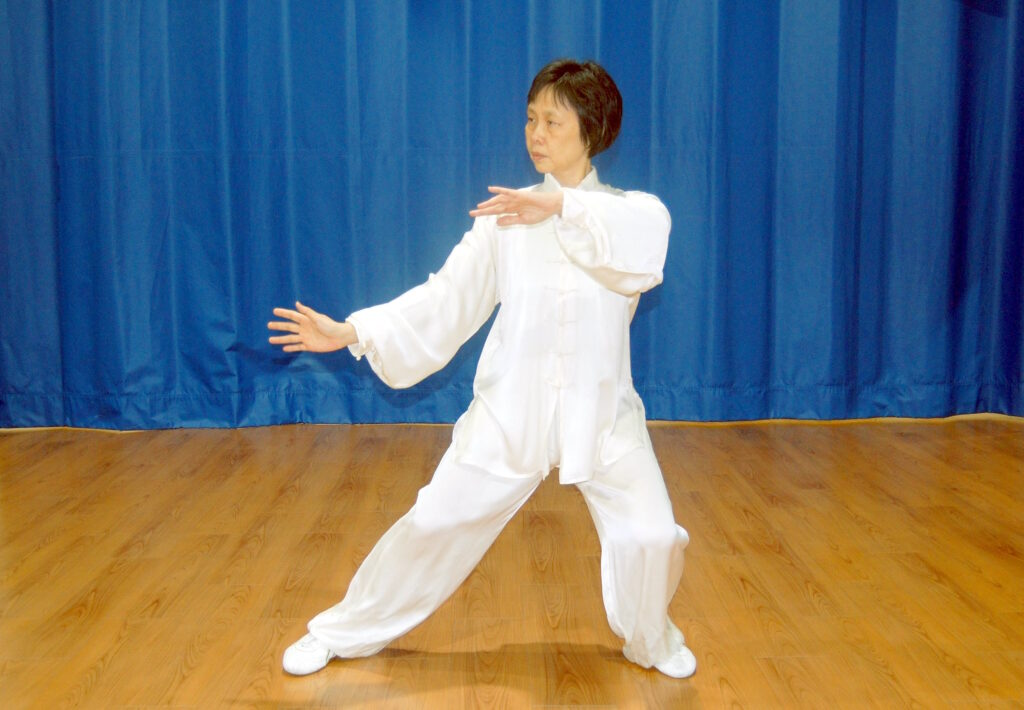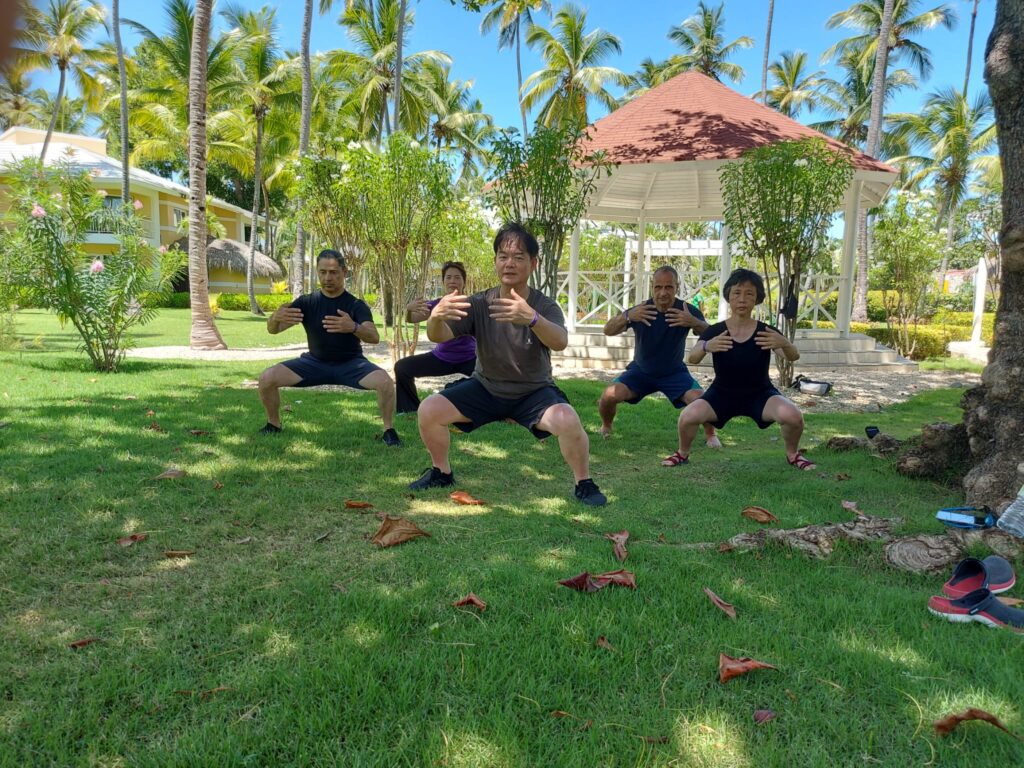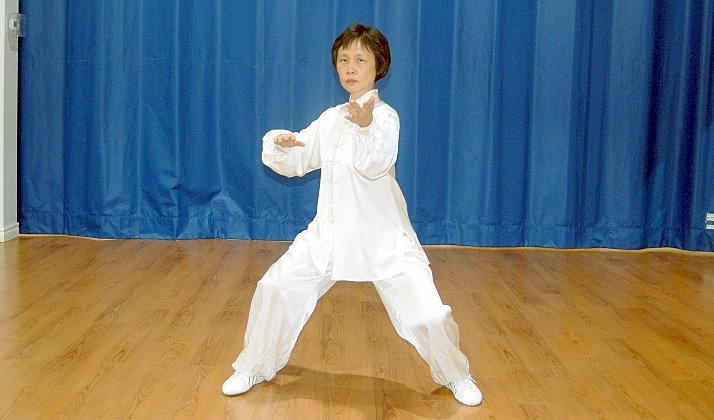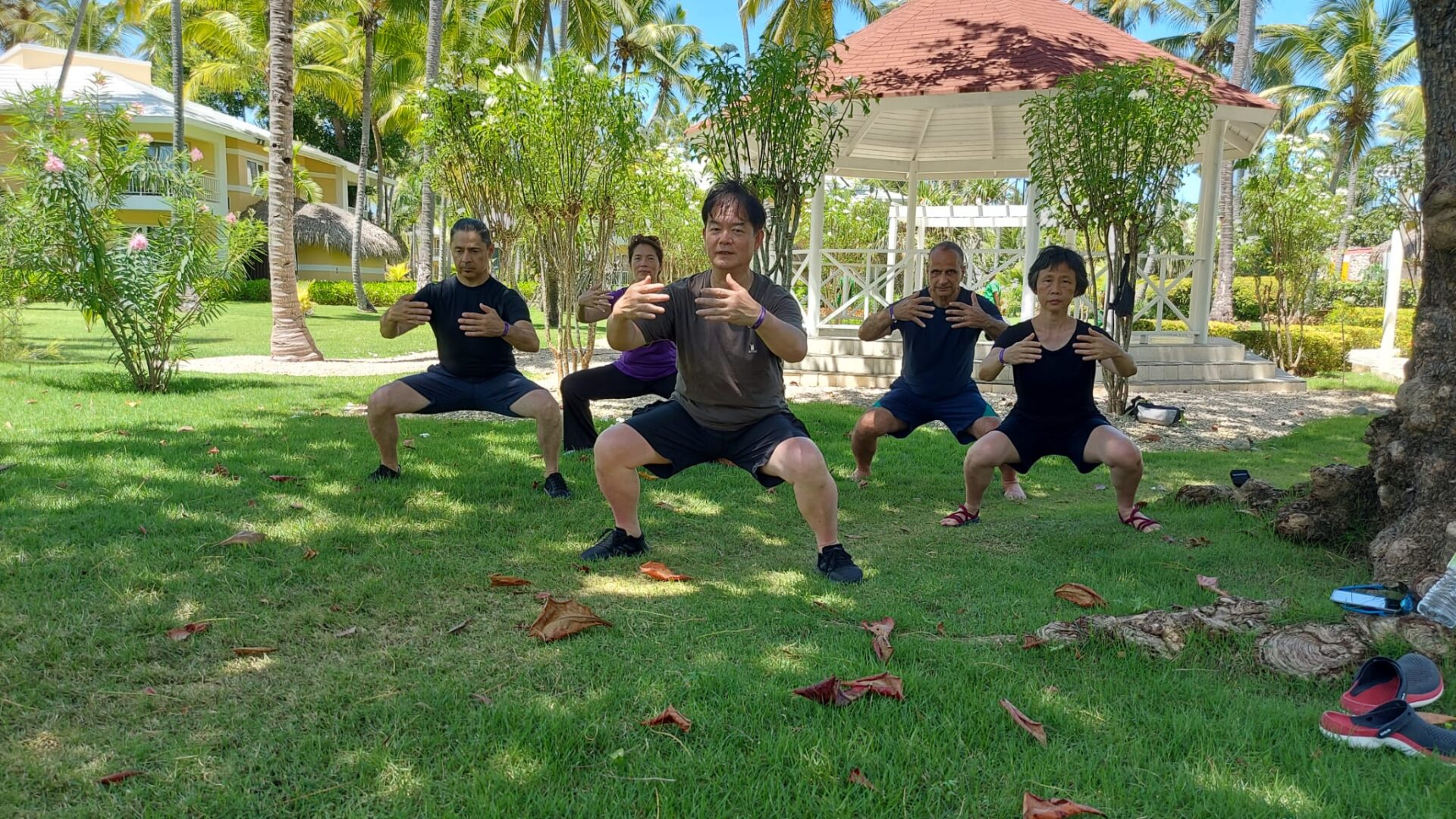In Part 2 of our 2-part Tai Chi Basic Principles blog series, we will delve into the principles introduced in our basic exercises four, five, and six, which are more physically demanding and require a wider, lower stance, as well as better coordination between the body, arms, and legs.
These principles are based on the foundation of those already introduced in part 1 of the blog series. Even though they are being taught separately, they do not conflict or contradict each other, every single principle is an important piece of the puzzle and they all eventually fit together to provide a roadmap to practising the art of Tai Chi Chuan.
Dantian
Let us start by introducing the term “dantian”. This is a specific point in our body located approximately two inches below the navel, inside our body slightly forward of the spine. It represents the centre of mass of our body, or sometimes referred to as the focal point of our “Qi” ( 氣 qì ).
The Tai Chi principle “Sinking Qi to the Dantian” (氣沉丹田) in practise is to centre and align our posture first, then relax all the opposing muscle groups, which will allow our body mass to flow down towards the diantian. The area around the dantian may feel heavy and dense, this high pressure feeling inside our body is very often referred to as “Qi” (pronounced as “chee”). The “Qi” as defined in Tai Chi is therefore referring to internal power, not the usual literal translation of air or energy.
In Tai Chi, the concept of “dantian” refers to the body’s centre of mass or centre of internal power. As we practise Tai Chi, it is important to mentally focus on the dantian ensuring that any movement regardless of the direction, speed or which body part is involved, must always initiate from the dantian. The dantian must be activated for even the smallest of movements, making it the driving force behind all Tai Chi techniques.

Bow Handle
Another term we want to introduce is the “bow handle”. We have already discussed the five bows in part 1 of our blog, now we want to identify the bow handle in each of the five bows.
A bow handle is a crucial component of a typical bow and is located at the centre of the bow, serving as the grip for the archer. When drawing an arrow, the handle provides stability to the bow, enabling the archer to steady their aim while they pull the arrow back. This process stores elastic energy within the bow. The stability provided by the handle is essential to the success of the shot, as it allows the archer to aim accurately and release the arrow with precision, before the bow moves as a result of the shot’s completion.
In Tai Chi, the handle for our main bow is the “Mingmen” 命門 (located directed opposite the navel). The handle for our arm bows are the elbows and the handle for our leg bows are the knees. When all five bows are combined as one, the handle is still the “Mingmen”.
Tai Chi emphasises on the importance of proper aim and control when executing movements. This is akin to aiming the bow handle at the target before releasing an arrow. The aim must be precise and the body must remain steady throughout the entire movement to ensure that the stored elastic energy is efficiently directed towards the target. By adhering to this principle, Tai Chi practitioners can optimise the power behind their movements and avoid wasting energy or misdirecting their efforts.

Alignment of the 3 Externals
To complete our understanding of the five bows, we now need to ensure that the upper bows (arm bows) and the lower bows (leg bows) are in alignment. We call this the alignment of the 3 externals (外三合).
When executing any movement, the following sequence must be adhered to:
- Dantian, shoulder, elbow, hand (丹田、肩、肘、手)
- Dantian, hip, knee, foot (丹田、胯、膝、腳)
As in our previous introduction of dantian, all movement must initiate from the dantian, after that the upper bow follows with shoulder, elbow, hand; and the lower bow follows with hip, knee, foot.
The 3 external alignment is referring to the shoulder/hip, elbow/knee and hand/foot pairs being coordinated in movement. Due to the complexity of this requirement, the basic exercise is typically practised with one arm first, then switching to the other arm. This allows the practitioner to focus on coordinating just one upper bow and one lower bow at a time.
When we have the upper and lower bows aligned, then the 5 bows in our body can act as one, greatly increasing the overall elastic power in our movements. With all movements initiating from the dantian, we can simply use the dantian as our “steering wheel” to control the whole body.

Silk Reeling Force
The final topic is Silk Reeling Force (纏絲勁). The name “Silk Reeling” comes from the way silk is extracted using a fluid, continuous, spiral movement as it is wound onto a reel. It is used to refer to the same smooth, flowing, rotational movements in our body to generate coiling power. This is especially apparent when practising Chen Style Tai Chi.
In our silk reeling basic exercise, we can also understand other additional principles like:
- Every joint is connected with force penetrating through every joint. Movement of one will cause all to move. (節節貫穿,一動全動。)
- Root in feet, power in legs, control from waist, form in fingers. (其根在腳,發於腿,主宰於腰,形於手指。)
When combined, the phrases suggest that all parts of our body are interconnected and our goal is to learn proper biomechanics allowing us to generate maximum power while maintaining balance.
In short, Silk Reeling Force is to add coiling power to our five bows’ elastic power. In the silk reeling basic exercise, the five bows must remain intact at all times while learning the concept of coiling power. Be careful not to over exert coiling power to the point where it breaks the five bows; once the structure of the five bows is broken, power cannot be stored.
Basic Exercises
The principles discussed in this blog are applied to every exercise and movement in Tai Chi, but for beginners, it is not practical to learn and apply them all at once. So for each basic exercise, we would focus on only one or two principles and try to achieve understanding and fluency within the basic exercise before applying it elsewhere.
When you progress to the advanced levels of training, any one of the advanced principles can be incorporated into the basic exercises. Instead of simply going through the motions of the exercise, one of the most effective ways to incorporate a new principle into our mind and body, is to apply it to the basic exercises first. You are already proficient with the moves, they are simple and repetitive, you can therefore completely immerse yourself into the learning experience.
Hopefully this two part blog will bring about a new perspective to our Tai Chi Basic exercises, they are indeed gems hidden in plain view.




👍